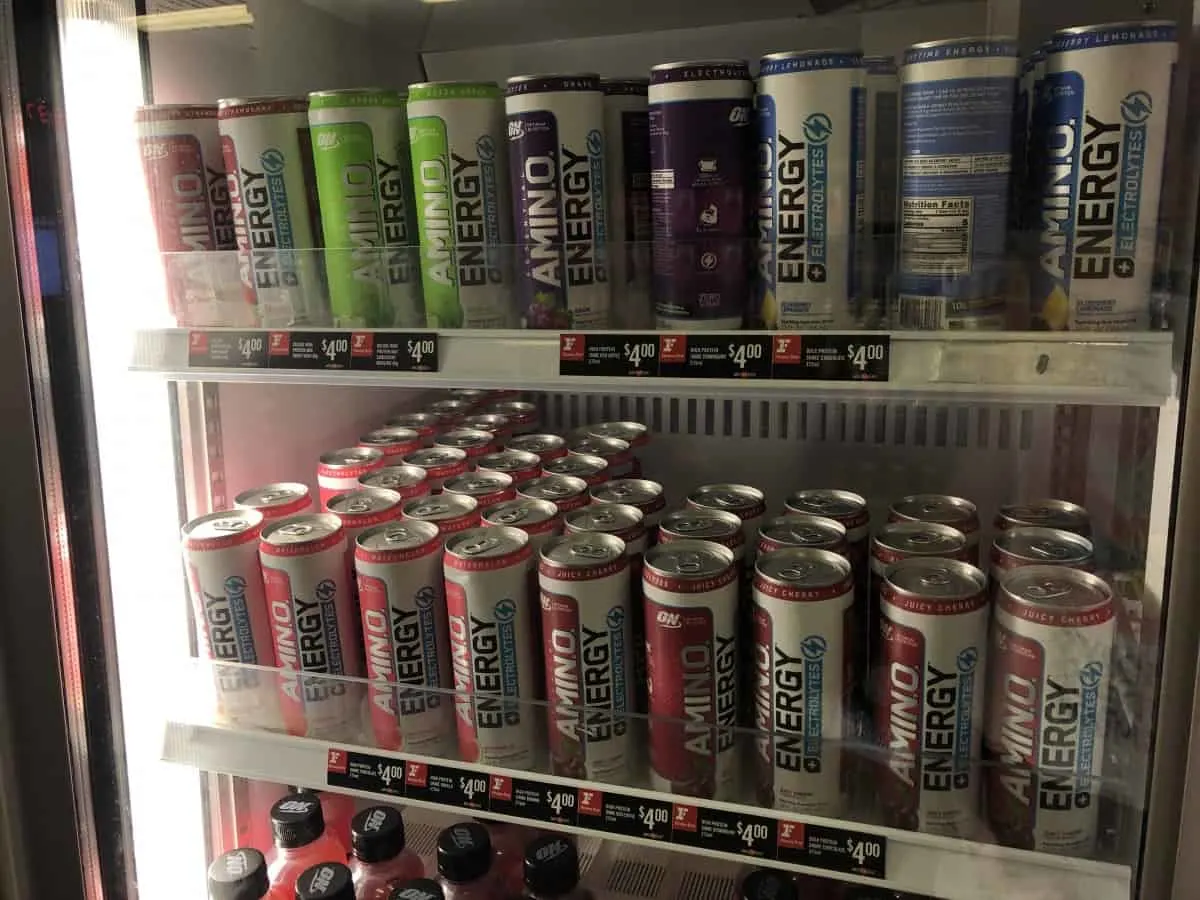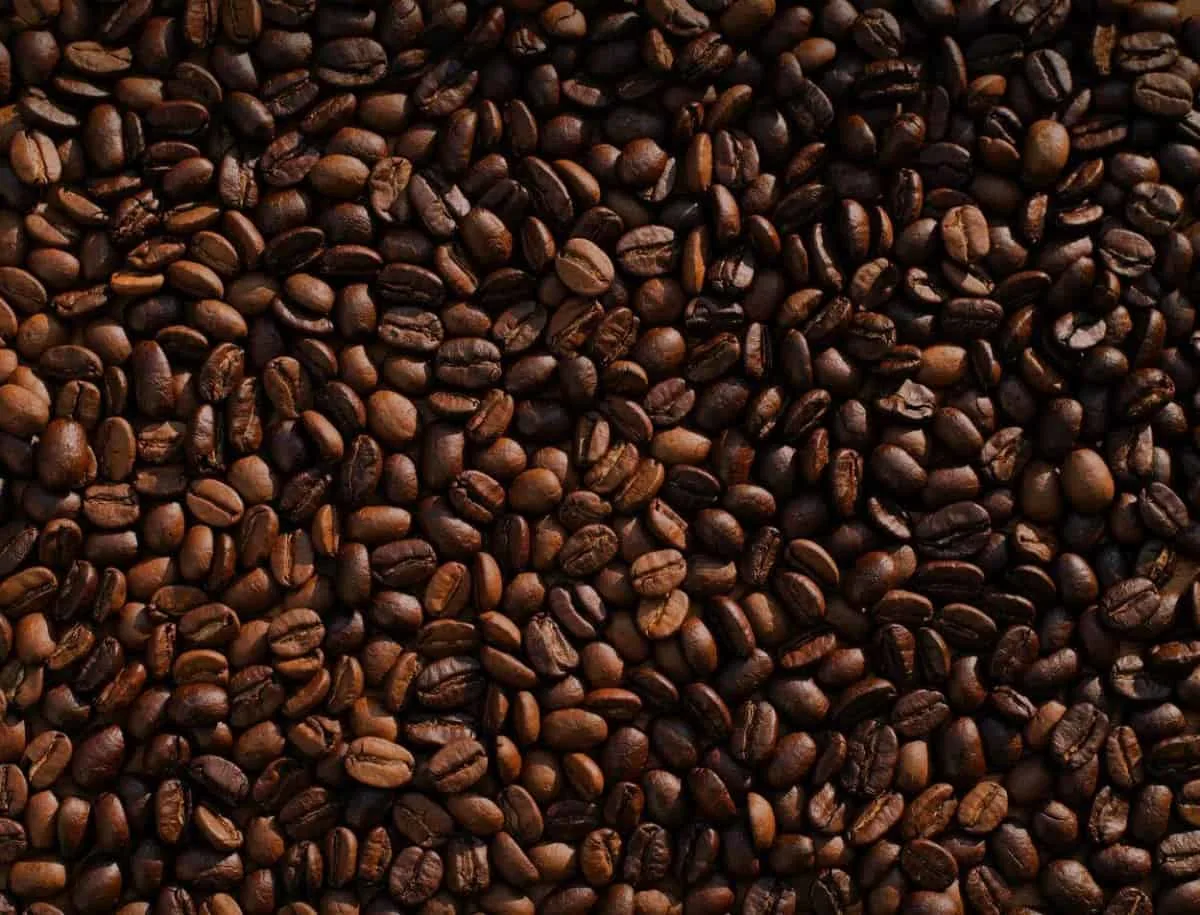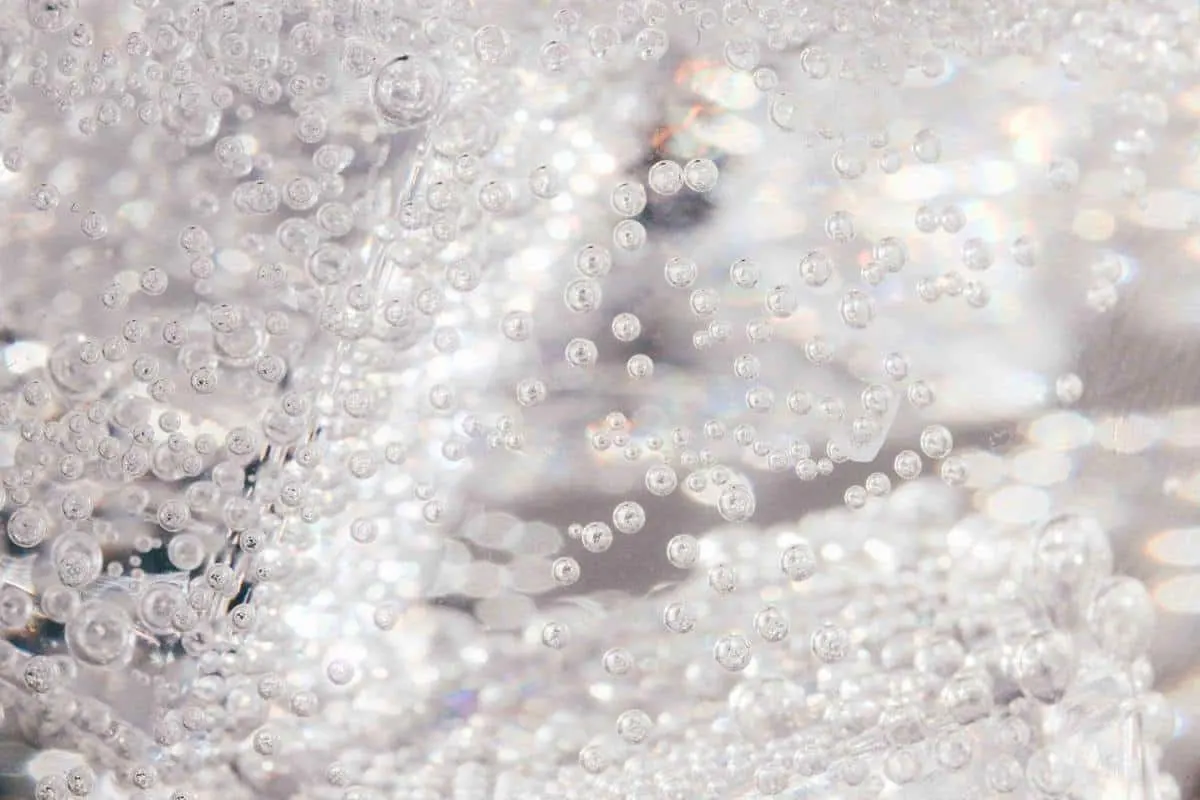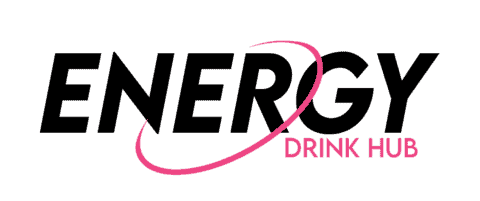Amino energy drink is like the child of Optimum Nutrition. The company is a fitness-focused company, which produces many products like whey proteins, supplements, protein bars, etc.
Amino Energy drink markets itself to be carbonated. It’s also rich in caffeine, amino acids, and electrolytes.
The drink is sugar-free, containing just 100mg of caffeine, and 5g of amino acids in each 12 fl. oz can.
While that sounds exciting and all, is it perfect for those who want to refrain from gluten?
Say no more. Keep reading as I uncover the truth along with its ingredients and nutrients.
Let’s get started.
Page Contents
Ingredient List Of Amino Energy
A single 12 fl. oz contains the following ingredients:
- Carbonated water
- Natural flavors
- Artificial flavors
- Citric acid
- Malic acid
- Sodium citrate
- Potassium sorbate (Preservative)
- Potassium benzoate (Preservative)
- Sucralose (Artificial sweetener)
- Potassium chloride
- Magnesium phosphate
- Tartaric acid (Only used in grape and strawberry flavors)
- Acesulfame potassium (Artificial Sweetener for grape flavor only)
Nutrition Facts Of Amino Energy
Take a look at the easy-to-read table below for a better understanding:
| Nutrients Employed | Amount Per Serving |
| Total Fats | 0g or 0% |
| Total Carbohydrate | 1g |
| Total Sugar | 0g or 0% |
| Amino Acids | 5g |
| Saturated Fatty Acids | 0g |
| Protein | 0g |
| Salt | 100mg |
| Caffeine | 100mg |
| Energy | 5 calories |
How Many Flavors Does Amino Energy Have?
The amino energy drink has ten flavors. Which includes:
- Blueberry Lemonade
- Juicy Strawberry
- Green Apple
- Grape
- Cherry
- Mango Pineapple Limeade
- Peach Bellini
- Ginger Ale
- Mix Berry Sangria
- Watermelon

How Much Caffeine Does Amino Energy Have?
A single 12 fl. oz serving of Amino energy drink has 100mg of caffeine per can.
Amino Energy uses “naturally occurring caffeine.” This means the 100mg of caffeine used in the energy drink is extracted naturally from plants.
This 100mg of caffeine equals a regular cup of coffee approximately. If you consume caffeine daily, 100mg wouldn’t be a big deal for you.
For a better understanding, the U.S FDA has recommended the highest dosage of 400mg caffeine per day. Consuming more than 400mg of caffeine in a day might cause problems like:
- Insomnia
- Jitters
- Headaches
- Anxiety
- Fatigue
From my personal experience, I purchased a 12 fl. oz Amino energy glass. Still, the effect of caffeine in the drink was barely noticeable even though the caffeine content is good enough.
Optimum Nutrition is going for a sports recovery drink for Amino energy than a regular energy drink.
With all that said, just because the caffeine content is less effective does not mean you will go overboard with your consumption.
Besides the side effects, I mentioned earlier, consuming too many Amino energy drinks may lead to a caffeine overdose. But it’s rare for that to happen unless you’re downing five cans of Amino per day.
Is 100mg Caffeine Too Much?
Unless you’re very sensitive towards 100mg of caffeine, according to the FDA, 100mg of caffeine is not too much.
If you’re a healthy adult with no pre-medical conditions, caffeine consumption will not cause significant side effects as long as it’s under the 400mg limit.
However, if you’ve some pre-medical issues, or have a family history, consult your doctor before consuming Amino energy.
Nevertheless, it’s essential to know how much caffeine you’re drinking in a day. Try to keep track of the caffeine content. That way, it can help avoid the side effects of caffeine like nervousness, dehydration, etc.

Which Artificial Sweeteners Used In Amino Energy?
Amino energy drinks are free from added sugar. It uses sucralose to sweeten the energy drink artificially.
Sucralose is one of the most popular added sugar alternatives used worldwide by many companies. It’s 600 times sweeter than regular sugar, and our body does not metabolize it.
Splenda is the most widely used sucralose substance found in diet drinks, sugar-free chewing gums, sweets, and other products.
Sucralose is present in all the flavors of Amino energy.
Acesulfame-k is another sugar substitute used by Amino energy, but it’s only present in the grapefruit flavor, inclusive of sucralose.
Acesulfame-K is 200 times sweeter than regular sugar and does the same job as sucralose; sweeten the drink.
Also, note that both artificial sweeteners have been approved by the U.S Food and Drug Administration for food uses.
Electrolytes In Amino Energy
Most traditional energy drinks do not include electrolytes in their energy drinks. So, in this case, I’d say Optimum Nutrition did a good job here.
Each 12 fl. oz can of Amino has 100mg of salt. Unfortunately, the exact ratios of sodium citrate, magnesium phosphate, and potassium chloride used in the drink are uncertain.
Electrolytes do wonders if taken before a workout. Even if you consume electrolytes after a workout, it helps you recover faster.
The following are some of the other benefits of electrolytes:
- Helps with the nervous system function
- Muscle Contraction
- Maintaining blood pressure, etc.
To get all the benefits at their peak, consume electrolytes in moderation. Just because it’s suitable for your body does not mean consuming it more will help you. Overconsumption might cause more harm than doing any good.
What Is An Amino Blend?
Amino Blend is Optimum Nutrition’s formula with eight amino acids to help provide the energy boost:
- L-Threonine
- L-Theanine
- L-Leucine
- L-Citrulline
- L-Alanyl
- L-Glutamine
- Micronized Taurine
- L-Lysine Hydrochloride
The Amino Blend contains eight amino acids, one of which is BCAA called L-Leucine.
What Are BCAAs?
For those wondering what BCAA is, it means Branched-chain Amino Acids. Usually, BCAAs contain three amino acids that are not essential: Leucine, isoleucine, and valine.
By not being essential means your body cannot produce BCAAs naturally. Foods like dairy, meat, fish, etc., are the sources of BCAAs.
Some benefits of BCAAs are :
- Enhance muscle mass
- Improve muscle growth
- Decrease muscle soreness (after a workout)
- May prevent liver diseases
- Boost athletic performance
You’ll see many bodybuilders or fitness enthusiasts taking BCAA supplements.
However, besides all the great benefits BCAAs provide, you need to be careful about your intake, or else you might face negative impacts like nausea, uneasiness, and sudden headaches. If you’ve got migraines, taking too much BCAAs can trigger your migraine.
Some studies show overconsumption of BCAAs can lead to diabetes, heart, and cancer diseases. These are fatal unless you’re reckless with your intake.
Is Amino Energy Drink Bad For You?
Personally, if you consume Amino energy drinks in moderation, Amino energy drink is not bad for you.
The drink has 100mg of caffeine, which doesn’t make it the most potent energy drink out there. But again, you might be sensitive towards 100mg of caffeine.
As long as you limit your Amino energy drink limits and know your caffeine tolerance, you’re good to go.
However, it’s still a good idea to keep the side effects of too much consumption in mind, just in case. Drinking too many Amino energy drinks may lead to the following negative impacts:
- Weight Gain
- Caffeine Crash
- Lack of focus and concentration
- Jitters

Is Amino Energy Drink Vegan?
Amino Energy Drinks are not vegan.
I think the drink isn’t vegan because of the brand’s signature ingredient, which is the Amino Blend.
The answer is on the Amazon website page.
But the good news is, most of the ingredients of Amino energy drinks seem to be either plant or synthetic-based. As per the ingredient list mentioned above. So you can say the glass is vegetarian but not vegan.
Is Amino Energy Drink Keto-Friendly?
Amino energy drink is keto-friendly.

Going on a keto diet means cutting down on carbs and sugar thoroughly.
Amino energy drink contains no added sugar, which means it has no carbohydrates.
So, considering that, it can be safe to say that Amino energy is suitable for a ketogenic diet.
Is Amino Energy Drink Gluten-Free?
The final verdict. It’s a tricky question to answer. Amino energy drink does not contain any gluten-containing products, like wheat, barley, and rye.
But the company itself did not verify anywhere whether the energy drink is gluten-free or not.
Since it doesn’t contain gluten-containing ingredients, I would say it’s gluten-free, but it’s heavily uncertain.
However, since the brand didn’t confirm that the drink is gluten-free, the best way to know is to contact the manufacturers.
What essential amino acids are in gluten?
The main storage proteins in wheat, rye, and barley are known as gluten, and they are classified as prolamins because of their high concentration of the amino acids proline and glutamine.
Proline and glutamine make up 15% and 35%, respectively, of the total amino acid composition of these proteins.
What drinks are not gluten-free?
Some drinks that may contain gluten include beer, whiskey, pre-mixed alcoholic drinks, some non-alcoholic drinks, and some fruit juices. It’s important to check the label or contact the manufacturer to confirm whether a particular drink is gluten-free.
If you have celiac disease, non-celiac gluten sensitivity, or a gluten allergy, it is essential to be aware of the potential sources of gluten in your diet, including drinks
Is Optimum Nutrition a pre-workout?
Optimum Nutrition offers a variety of supplements, including products that can be used as pre-workout options. One popular product from Optimum Nutrition is “Gold Standard Pre-Workout,” which is specifically designed to provide energy, focus, and performance support before exercise.
However, it’s important to read the label, understand the ingredients, and assess whether the product aligns with your fitness goals and health needs. Consulting a healthcare professional or fitness expert before incorporating any supplement into your routine is advisable to ensure it’s appropriate for your individual circumstances.
Is Optimum Nutrition FDA approved?
Optimum Nutrition is a well-established supplement company known for its quality products. While the Food and Drug Administration (FDA) doesn’t explicitly “approve” dietary supplements like it does with drugs, it does regulate them to ensure safety and labeling accuracy.
Before a dietary supplement like those offered by Optimum Nutrition can be sold in the U.S., manufacturers are required to notify the FDA about the ingredients they use and provide information on product labeling. The FDA monitors these supplements to ensure they are not adulterated or misbranded and that they meet certain quality standards.
Drinks You Can Try Instead Of Amino Energy
Amino energy drink is a great energy drink. But here are some alternatives you can try instead of Amino energy:
Check my article out to find out whether Red Bull is gluten-free or not.
Final Verdict
A single 12 fl. oz can of Amino Energy cost you $2.
With that price tag, you’re getting 100mg of naturally occurred caffeine, no added sugar, with only five calories in each can. I’d say that is pretty healthy. But of course, only in moderation.
The amino blend, electrolytes, and the BCAA present in the drink will give you a decent boost of energy without any sugar crashes, considering it has no added sugar.
It does not have any pieces of evidence for gluten-friendly products. So unless you’re someone who is on a strict gluten-free diet, Amino energy drinks might be a good choice for you.
Related Articles
Here are a few related articles that you might like too:
